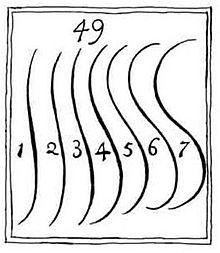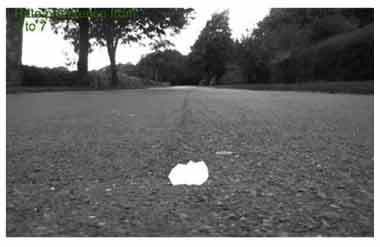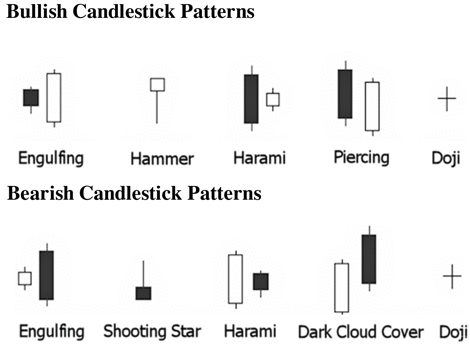Marc Abrahams's Blog, page 321
July 2, 2015
Ig Nobel Prize winner BP will pay $18.7 billion, reportedly
BP, which was awarded an Ig Nobel Prize in 2010, is in the news again for the actions that won that prize. The New York Times reports:
BP to Pay $18.7 Billion for Deepwater Horizon Oil Spill
NEW ORLEANS — The Gulf Coast states and the federal government have reached a tentative settlement with BP for the British oil company to pay $18.7 billion over 18 years, to compensate for damages from the 2010 Deepwater Horizon oil spill, state officials said Thursday….
The 2010 Ig Nobel Prize for chemistry was awarded to Eric Adams of MIT, Scott Socolofsky of Texas A&M University, Stephen Masutani of the University of Hawaii, and BP [British Petroleum], for disproving the old belief that oil and water don’t mix.

Weight? Wait — don’t tell me in kilos. (BWMA)
 The British Weights and Measures Association (BWMA) exists, it says, “to protect and promote British weights and measures, and to oppose compulsory use of the metric system”.
The British Weights and Measures Association (BWMA) exists, it says, “to protect and promote British weights and measures, and to oppose compulsory use of the metric system”.
Their catchy slogan: “campaigning for inch-pound industries and consumer interests”.
They maintain a list of “Corporate Culprits” — people and groups of whom they say:
Just who are the people who would have us all “go metric”? Who do they represent? What are their motives? BWMA reveals some of the answers in this rogues’ gallery of busybodies, bureaucrats, boffins and cowboys.
 Among these culprits one finds the UK Metric Association and Lord Taverne [pictured here]:
Among these culprits one finds the UK Metric Association and Lord Taverne [pictured here]:
Lord Taverne is a Patron of the UK Metric Association. He was the minister in charge of decimalisation of the coinage in 1968, and sees metrication as part of the same process.
BONUS: Inch by inch…:
UPDATE: Investigator Mathew Wasley informs us of the BWMA’s generous campaign, some years ago, to save the litre.

July 1, 2015
Podcast #18: Personal space at the beach
Personal spacing at the beach, pseudostupidity, and other things, turn up in this week’s Improbable Research podcast.
Click on the “Venetian blinds” icon — at the lower right corner here — to select whichever week’s episode you want to hear:
SUBSCRIBE on Play.it or iTunes, to get a new episode every week, free.
[NEWS: Soon, the podcast will also be available on Spotify.]
This week, Marc Abrahams tells about:
Personal Space at the Beach. (“Territorial Spacing on a Beach,” Sociometry, Julian J. Edney and Nancy L. Jordan-Edney, vol. 37, 1974, pp. 92-104. / “Territorial Spacing on a Beach Revisited: A Cross-National Exploration,” H.W. Smith, Social Psychology Quarterly, vol. 44, no. 2, 1981, pp. 132-7. / “Personal Space and Stimulus Intensity at a Southern California Amusement Park,” Paul D. Nesbitt and Girard Steven, Sociometry, vol. 37, no. 1, 1974, pp. 105-15. / “How are Distances Between Individuals of Grazing Cows Explained by a Statistical Model?” Masae Shiyomi, Ecological Modelling, vol. 172, 2004, pp. 87–94. / “How are distances between grazing cows determined: A case study,” Masae Shiyomi, Applied entomology and zoology 39, no. 4 (2004): 575-581. / Islam, Tamanna, Eiki Fukuda, Masae Shiyomi, Molla Rahman Shaibur, Shigenao Kawai, and Mikinori Tsuiki. “Effects of Feces on Spatial Distribution Patterns of Grazed Grassland Communities.” Agricultural Sciences in China 9, no. 1 (2010): 121-129. Featuring dramatic readings by Andrew Berry.) Here’s video of someone else, more recently, intruding on people’s personal space near (though not quite on) a beach:
French Hairdresser-mathematicians. (Archibald, Raymond Clare (1943). ‘Tables of Trigonometric Functions in Non-Sexagesimal Arguments.’ Mathematical Tables and Other Aids to Computation 1 (2): 33–44. / Grattan-Guinness, Ivor (1990). ‘Work for the Hairdressers: The Production of de Prony’s Logarithmic and Trigonometric Tables.’ Annals of the History of Computation 12: 177–85. Featuring dramatic readings by Sue Wellington.)
Personality Makeup of Makeup Users. (“Why Women Use Makeup: Implication of Psychological Traits in Makeup Functions,” Rodolphe Korichi, Delphine Pelle-De-Queral, Germaine Gazano, and Arnaud Aubert, International Journal of Cosmetic Science, vol. 31, no. 2, March–April 2008, pp. 156–7. Featuring dramatic readings by Dan Schreiber.)
What women find more disgusting than men. (“Disgust Sensitivity and the Sex Difference in Fears to Common Indigenous Animals,” W.A. Arrindell, S. Mulkens, J. Kok, and J. Vollenbroek, Behaviour Research and Therapy, vol. 37, no. 3, March 1999, pp. 273-80. Featuring dramatic readings by Chris Cotsapis.)
Pseudostupidity. (“Pseudostupidity and Analyzability,” L.S. Cohn, Journal of the American Psychoanalitic Association, vol. 37, no. 1, 1989, pp. 131-45. / “Pseudostupidity: a Study in Masochistic Exhibitionism,” W.N. Evans, Psychoanalitic Review, vol. 61, no. 4, Winter 1974-75, pp. 619-32. Featuring dramatic readings by Jean Berko Gleason .)
Boys Will Be Boys. (“And Now, a Needle in the Rectum,” Naresh K. Soni, Ashwini Gupta, and Narayan S. Shekhawat, Indian Journal of Gastroenterology, vol. 16, no. 2, April 1997, pp. 77–8. / “Testosterone Concentration in the Seminal Plasma of Cocks,” M. Zeman, J. Kosutzky, and Eugenia Bobakova, British Poultry Science, vol. 27, 1986, pp. 261–6. / “The Nubility Hypothesis,” Frank Marlowe, Human Nature, vol. 9, no. 3, 1998, pp. 263–71. Featuring dramatic readings by Corky White .)
The mysterious John Schedler perhaps did the sound engineering this week.
The Improbable Research podcast is all about research that makes people LAUGH, then THINK — real research, about anything and everything, from everywhere —research that may be good or bad, important or trivial, valuable or worthless. CBS distributes it, both on the new CBS Play.it web site, and on iTunes (and soon, also on Spotify).

A generator of lyrics and music from academic papers
“This work attempts to create lyrics from academic papers and appropriate melodies to go with them. We believe this system can also be modified to use different initial data sources, be it text sources for the lyrics or music sources for the music style. We chose academic papers as input due to their diversity and availability. Furthermore, due to their usual seriousness, it was our opinion that it would be amusing, not only for readers but also for authors, to see these works in a different light.”
The SMUG: Scientific Music Generator has been developed by Marco Scirea, Gabriella A. B. Barros, and Noor Shaker of the Center for Computer Games Research, IT University of Copenhagen, Denmark, and Julian Togelius at the Department of Computer Science and Engineering, New York University, US.
TRY IT: You can try it yourself, online, and hear the delights of such music.
The paper provides a sample which SMUG generated from Darwin’s ‘On the origin of species by means of natural selection’
“Bul let tins first ar gu ments na tu re an is an same thus hist re ca pi tu la tion con tro ver sial ahh p man in ha bi tants”
Their paper is presented today at ICCC 2015: The Sixth International Conference on Computational Creativity, Park City, Utah, US, June 29 – July 2, 2015. The conference programme, including papers on AI cocktail generation, AI computer-aided humour and AI automatic painting, can be found here.
UPDATE: The authors have kindly alerted us to the existence of an online version of SMUG. Improbable has uploaded the paper ‘Frictional Coefficient under Banana Skin’ (by the winners of the 2014 Ig Nobel physics prize, Kibyyoshi Mabuchi, Kensei Tanaka, Daichi Uchijima and Rina Sakai) The paper is now available as a lyrical and musical rendition.
Upload your paper of choice (in .pdf format) here.

June 30, 2015
A look back at the opening of the Improbable Research European Bureau
It’s exciting to look back, every now and again, at the opening of Improbable Research’s European Bureau, in 2006.

June 29, 2015
Is science that seems crazy crazy?
The news is awash today with the question: Is scientific research that makes people laugh bad or is it good, or what?
Shirley Wang, in the Wall Street Journal, explores the general question, under the headline “Science Wants to Know: Can Worms Swim?” It begins:
Can worms learn to swim? And why do some people see the face of Jesus on their toast?
Science is filled with research that can appear wacky or silly, obvious or trivial. Some topics elicit concern from both inside and outside the scientific community about whether they answer important questions or waste time and taxpayer money.
But sometimes the seemingly oddest studies add meaningfully to scientific knowledge, provoke a new direction for inquiry or spur a different way of understanding a phenomenon. Predicting what research will be significant can be difficult. It may not become apparent for years or even decades.
As the money from the government to support and conduct research gets tighter, scientists and funding agencies say it’s increasingly difficult to get any grants, particularly for high-risk research. More big grants go to researchers who have already tested out their methods and can show data suggesting their proposed experiments will work, they say….
Also today, Kelly Servick reports, in the journal Science, on a specific research program that achieved “Sorting cells through levitation” It begins:
What looks like a row of drifting gumdrops could hold a wealth of information for both clinical researchers and bench scientists. A team of bioengineers and geneticists has designed a device that can suspend a single living cell between magnets and measure its density based on how high it floats. Such measurements could be used to sort different types of cells—to distinguish cancerous cells from healthy ones, for example—or to measure how cells change when exposed to drugs.
A demonstration of the approach, published online today in the Proceedings of the National Academy of Sciences, is “pretty amazing stuff that could be a game changer for a lot of things if true,” says John Minna, a cancer biologist at the University of Texas Southwestern Medical Center in Dallas.
Researchers have used magnets before to levitate whole creatures, such as living frogs—a bizarre demonstration that won its author an Ig Nobel Prize….
BONUS: Here’s detail, including video, on that cell levitation research.
BONUS: Here’s now-historical video of the Ig Nobel Prize-winning magnetically levitated frog:

Leadership and Gardening – an update
Following on from our Improbable note about Leadership via Gardening, may we also draw attention to the work of Dr. Thorsten Grahn (of Regent University, Virginia Beach, US) who not only considers the analogies between gardening and organizational leadership but is also one of the very few organizational observers to have examined the leadership implications of artificial flowers. See: Artificial Flowers are Beautiful, but Do Not Grow.
“
There are many good reasons to prefer artificial flowers to natural ones. The good ones look extremely pretty. Even after a month in a vase they are still in full bloom, the leaves have not gone limp and they require no water, no sunshine and no nutrition to keep looking pretty. They will never die.
Artificial flowers only have one disadvantage: they do not grow! They stay the same forever. They will never die, but only, because they never lived.
Sometimes leaders wish their staff would behave like wonderful artificial flowers. However, soon they would discover that there is no more growth, no more flexibility and no more adaptation to a changing environment. In fact, no more change at all.
Organizations need living people who want to grow, and not people, who want to keep the status quo. The leadership must treat the people as living plants that need much care, but in the long run they will always outshine the ‘artificial flowers’ in the organization.“
[photo courtesy Tom Harpel @ Wikipedia]

June 28, 2015
Fock: Performance of Candlestick Analysis
A researcher named Fock, together with some colleagues, throws water on a financial investment practice called “candlestick analysis”:
“Performance of Candlestick Analysis on Intraday Futures Data,” J. Henning Fock, et. al., Journal of Derivatives, Fall 2005, Vol. 13, No. 1: pp. 28-40. The authors write:
“Many practitioners use technical trading in derivatives markets, especially futures. Academic researchers, by contrast, consider “charting” to be without merit… Fock, Klein, and Zwergel put one very popular charting technique, the “candlestick” method, to the test. They start by developing specific criteria for a set of basic candlestick patterns, and then measure predictive performance with intraday data from two major futures, the DAX stock index contract, and the Bund interest rate future. And guess what? The academics are right! The authors find no evidence of predictive ability from candlestick patterns alone, or in combination with other common technical indicators, like momentum.”
BONUS: A web site called The Swing Trading Guide gives these examples of candlestick patterns:

June 27, 2015
Preference peculiarities: Curves good – or angles bad?
 In 1753 (or thereabouts) William Hogarth published his study into ‘The analysis of Beauty’ (“Written with a view of fixing the fluctuating ideas of taste.”) He was particularly interested in the ‘Perfect Curve’. For Hogarth, number 4 hit the spot.
In 1753 (or thereabouts) William Hogarth published his study into ‘The analysis of Beauty’ (“Written with a view of fixing the fluctuating ideas of taste.”) He was particularly interested in the ‘Perfect Curve’. For Hogarth, number 4 hit the spot.
Scroll forward to April 2015 for another study about curves, which asks whether peoples’ apparent preference for curvaceous things could perhaps stem from a dislike of angular things? Perhaps corners are dangerous? The research paper ‘Do observers like curvature or do they dislike angularity?’ is scheduled for publication in the British Journal of Psychology.
 A series of four experimental investigations looked at:
A series of four experimental investigations looked at:
● Curvature Articulation and Complexity
● Curvature and Peripersonal Space [see photo of a ‘hole’ in the road]
● Curvature and Pleasantness
● Curvature and Approach Behaviour
– showing that the mysterious attraction of the curve is probably still worthy of further research.
The authors conclude that:
“Most people prefer curved stimuli to angular stimuli. In our data, this effect was clear in all four experiments, including when lines were presented through an aperture and therefore did not form closed shapes. Moreover, our data suggest that the preference for curvature is not a by-product of a negative response to angularity. We conclude that the curvature effect is likely to be caused by intrinsic characteristics of the stimuli, rather than what they might signal. “
Note: Co-Author Marco Bertamini also looks into holes, both curvy and angular, like the one shown above.
Also see: (regarding roundness and angularity) ‘Artistotle’s pebble hunch — upheld’

June 26, 2015
Thigh Gaps
Considering the relatively high level of media interest in the so-called ‘Thigh Gap’ phenomenon over the last few years, it’s perhaps surprising that very few scientific researchers appear to have looked into it. Improbable has managed to find only one experimental study, undertaken by Khyati Maheshkumar Ganatra of the Sally McDonnell Barksdale Honors College at the University of Mississippi, and published in 2014. The research was conducted to find out if a difference exists between males and females regarding their preferences for (or against) thigh gaps. Ganatra showed 148 participants (84F, 64M) the nine images below –
– and asked them to rate the following statements according to applicability.
I have a thigh gap and love it
I have a thigh gap and hate it
I don’t have a thigh gap but would like one
I don’t have a thigh gap and would not like one
I couldn’t care less about the thigh gap
Analysis of the results revealed the following :
“Overall, there seems to be one main conclusion based on the results of the participants’ reported responses. That is, there does not appear to be a difference between men and women’s reported preferences for a thigh gap in the female silhouettes used in the present study.”
see: ‘Analysis of Body Type Preferences Among Young Adults’
Non-experimental academic scrutiny of the phenomenon is also quite rare. See one of the few examples (in French, from le Journal Français de Psychiatrie, 2015 /1, n° 41) ‘De Body art en phénomène du thigh gap : monstration de corps, présentation de « moi »’ by Catherine Desprats-Péquignot.
Du désir et du sujet divisé …
… à la jouissance et au mirage du « moi-corps »
My thigh gap is myself

Marc Abrahams's Blog
- Marc Abrahams's profile
- 14 followers





